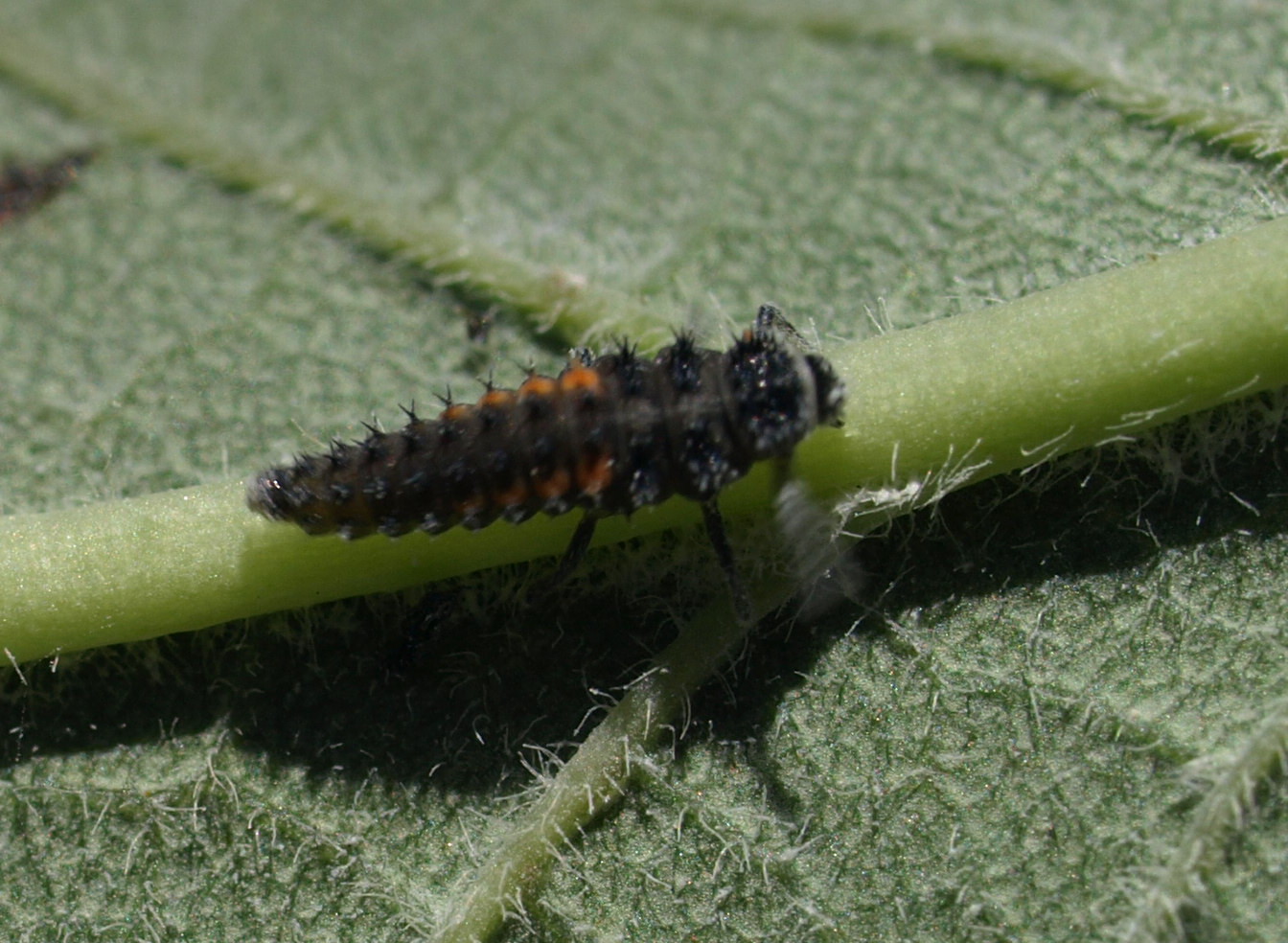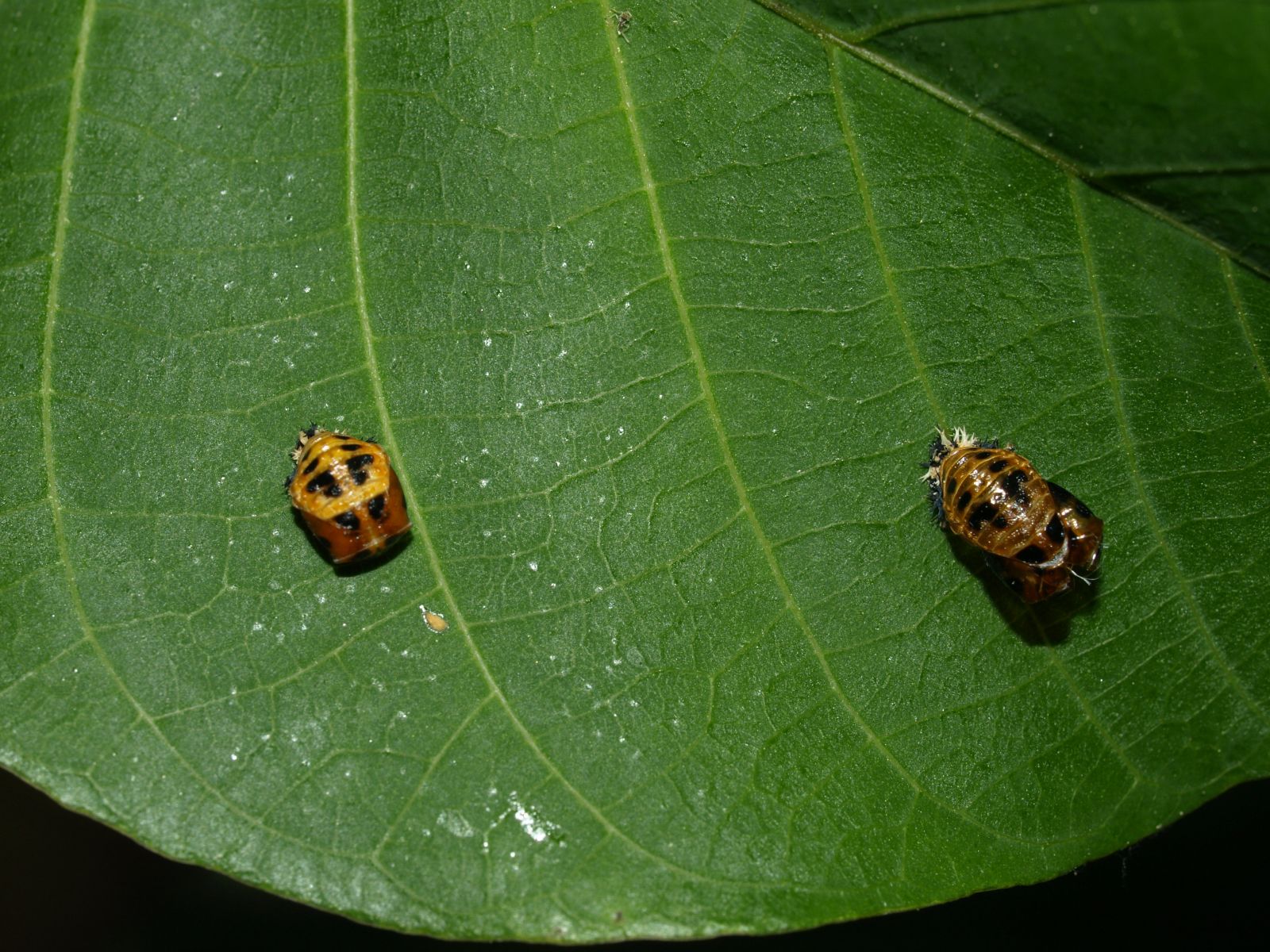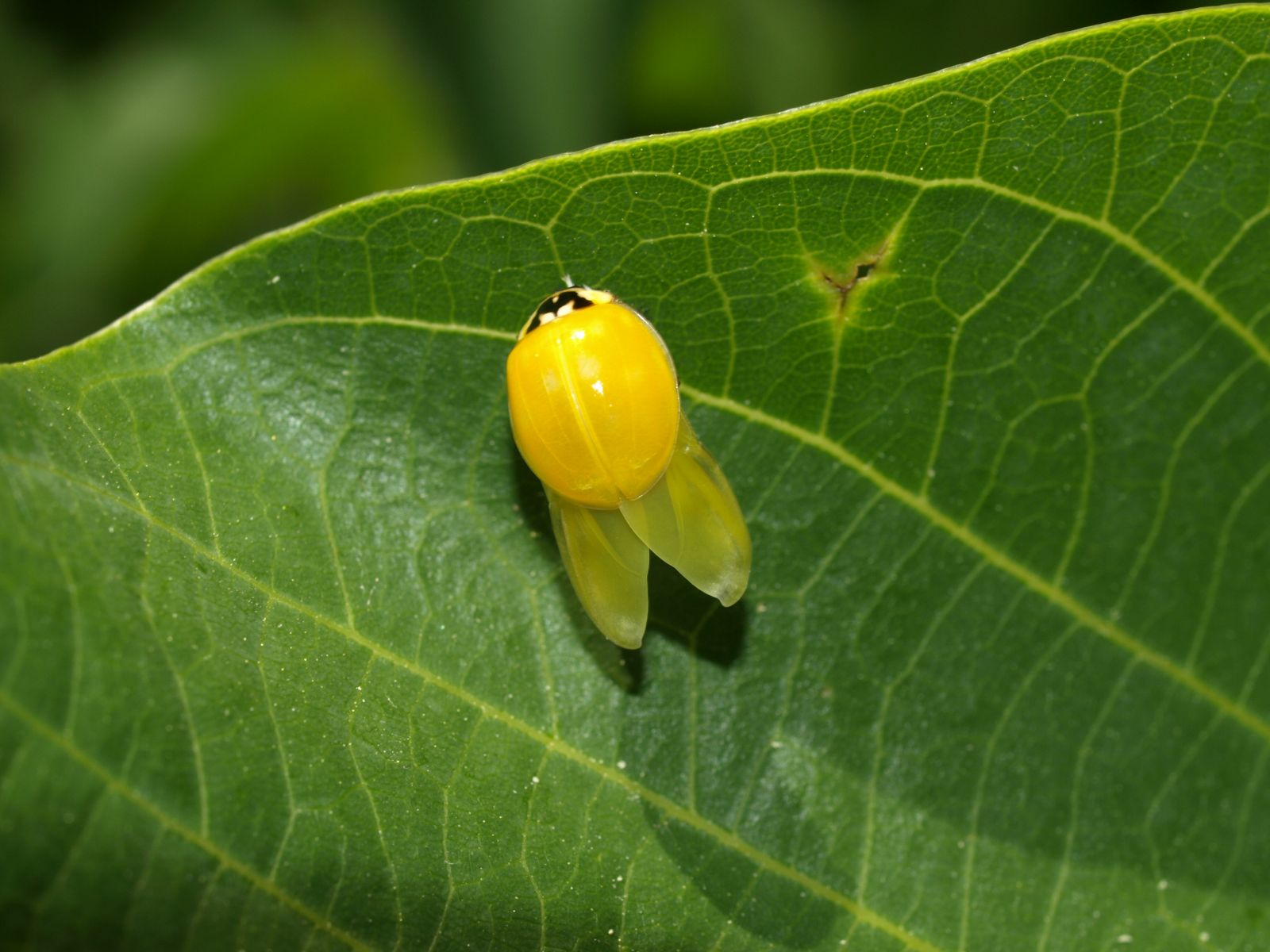Ladybird Beetles (Ladybugs)
General Description
Hosts
Both adults and larvae feed on aphids, mites and scales, and other soft-bodied insects such as immature pear psylla.
Damage
Identification
Egg - Yellow and spindle-shaped, usually laid in clusters (Fig. 1).
(1).jpg) |
| Figure 1. Lady beetle eggs and newly hatched larvae (H. Philip) |
Larva - Dark (slate-grey – blue-grey) bodies with orange or yellow markings and well developed legs; look like tiny alligators (Fig. 2).
 |
| Figure 2. Multicoloured Asian lady beetle larva. (H. Philip) |
Pupa - Orange and black colour with oval, convex-shaped body, usually attached to the upper surface of leaves. Non-feeding and immobile (Fig. 3).
 |
| Figure 3. Multicoloured Asian lady beetle pupa (left) and pupal skin. (H. Philip) |
Adult - Generally convex-shaped, brightly colored, with or without spots, size 1.0-5.0 mm. Depending on species, colours are black, red, orange-red to almost yellow (Fig. 4). Newly emerged adults are usually yellow without any spots (Fig. 5).
 |
|
| Figure 4. Adult Multicoloured Asian lady beetle. (H. Philip) | Figure 5. Newly emerged Multicoloured Asian lady beetle. (H. Philip) |
Life History
Overwinter as adults outside orchards, usually in the hills. The newly introduced Multi-coloured Asian lady beetle will overwinter in buildings and other sheltered sites in and around orchards. Eggs are laid in clusters on underside or surface of leaves and branches infested with aphids. Usually only one generation per year. Adult ladybird beetles are available commercially for release into orchards with established colonies of aphids. If no or only small aphid colonies are present, the beetles will fly away in search of suitable sized colonies.
Monitoring
Inspect aphid colonies for adults and/or larvae, or use a beating board for larvae.
